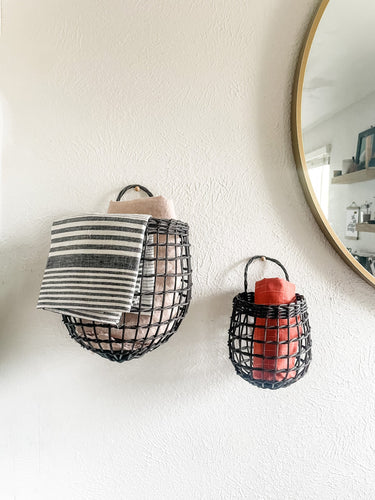Is your sewing space cluttered and chaotic? Are your beautiful fabrics buried under piles of unfinished projects? Fear not! Organizing your sewing space can not only increase your productivity but also inspire your creativity. In this guide, we’ll explore effective tips and strategies to create a perfectly organized sewing area that works for your unique projects, whether they involve sewing, quilting, or handwork. Get ready to make your stitching space a joyful and productive haven!
The Importance of an Organized Sewing Space
An organized sewing space is essential for both seasoned seamstresses and newcomers alike. When everything has its place, you’ll find that:
- Efficiency: You can easily locate your tools and materials, reducing time spent searching.
- Creativity: A tidy space invites inspiration and helps you focus on your projects.
- Peace of Mind: An orderly environment can reduce stress and makes sewing a more enjoyable experience.
Whether you have a designated sewing room or simply a corner of your living space, creating an organized and functional area is within your reach.
Assess Your Space and Needs
Before diving into organizing, take a moment to assess your sewing space. Consider the following:
Available Space
Look at how much room you have to work with. Is it a small corner or a full room? Identify your work surface and any additional shelving or storage options.
Your Sewing Style
Understanding your sewing needs is vital. Are you primarily focused on quilting, clothing-making, or handwork projects? Each style may require different tools and materials, affecting how you should organize your space.
Sorting and Decluttering Your Supplies
The first step toward an organized sewing space is sorting through your supplies and decluttering. Here’s how:
Gather Everything
Bring all your fabrics, tools, and notions into one area. This visual inventory helps you see duplicates and items you may no longer need.
Sort by Category
Organize your supplies into categories such as:
- Fabrics
- Sewing tools (scissors, pins, needles)
- Notions (zippers, buttons, threads)
- Projects (in-progress and completed)
Evaluate and Purge
Once sorted, evaluate what you want to keep. Ask yourself questions like:
- Have I used this in the last year?
- Do I truly love this fabric?
- Am I likely to finish this project?
Set aside items you want to donate, sell, or throw away. You’d be surprised by how much space a good purge can free up!
Creating Storage Solutions
With your supplies sorted, it’s time to create effective storage solutions that suit your space and style. Here are some ideas:
Use Clear Containers
Clear containers allow you to see your fabrics and tools at a glance. Organize fabrics by color or type inside these containers for easy access.
Vertical Storage
Make use of vertical space through shelving, pegboards, or wall organizers. Store tools, patterns, and smaller items within reach while keeping surfaces clear.
Drawers and Bins
Drawer systems are excellent for organizing tools and supplies. Consider using labeled bins for specific items, such as threads, scissors, and marking tools. This helps locate what you need swiftly.
Designate Zones in Your Sewing Space
A functional sewing space should have designated areas for different activities. Here are some suggestions:
Cutting Area
Create a dedicated zone for cutting fabrics, featuring a large cutting mat, rotary cutter, and ruler. Ensure plenty of light in this space to help with precision.
Sewing Machine Station
Your sewing machine should have its area, complete with all the necessary tools and materials within arm’s reach. This minimizes disruptions and allows you to focus on your stitching.
Ironing Station
Position your ironing area close to your sewing machine. Keep your iron, pressing cloths, and spray bottles handy for ease of use.
Incorporate Functional Decor
Why not make your organized space inviting and stylish? Incorporate elements that reflect your personality while serving a functional purpose.
Inspirational Wall Art
Hang inspiring quotes, sewing patterns, or even fabric swatches on your wall. This can motivate you and add a personal touch to your space.
Designer Storage Solutions
Look for aesthetically pleasing storage solutions that match your decor. Beautiful fabric bins or artistic trays can make your space visually appealing while still being efficient.
Keep it Dynamic
As you dive deeper into your sewing projects, remember that organization is a dynamic process. Your needs may change as you explore new crafts or different types of sewing, such as quilting or handwork. Periodically reassess your space and continue to fine-tune your organization system to remain functional and inspiring.
Routine Maintenance
Implement a monthly clean-up routine to help maintain order. Put away supplies after each sewing session, and routinely evaluate your storage solutions for any adjustments.
Final Flourishes to Enhance Your Space
To keep your sewing area functioning at its best, consider these additional tips:
- Lighting: Invest in good lighting to minimize eye strain. A combination of natural and artificial light works best.
- Comfort: Ensure your chair is comfy and adjustable to promote good posture while sewing.
- Aromatherapy: Use scented candles or diffusers in your space to create a relaxing atmosphere while you work.
Your Crafting Retreat Awaits
With these effective organization tips, you'll transform your sewing space into a haven of creativity and efficiency. Whether your passion lies in sewing, quilting, or handwork, a well-organized area will help you cultivate our love for stitching and allow your creativity to flourish. Dive into your next project with excitement and a newfound sense of order; your ideal crafting retreat is just a few steps away!

